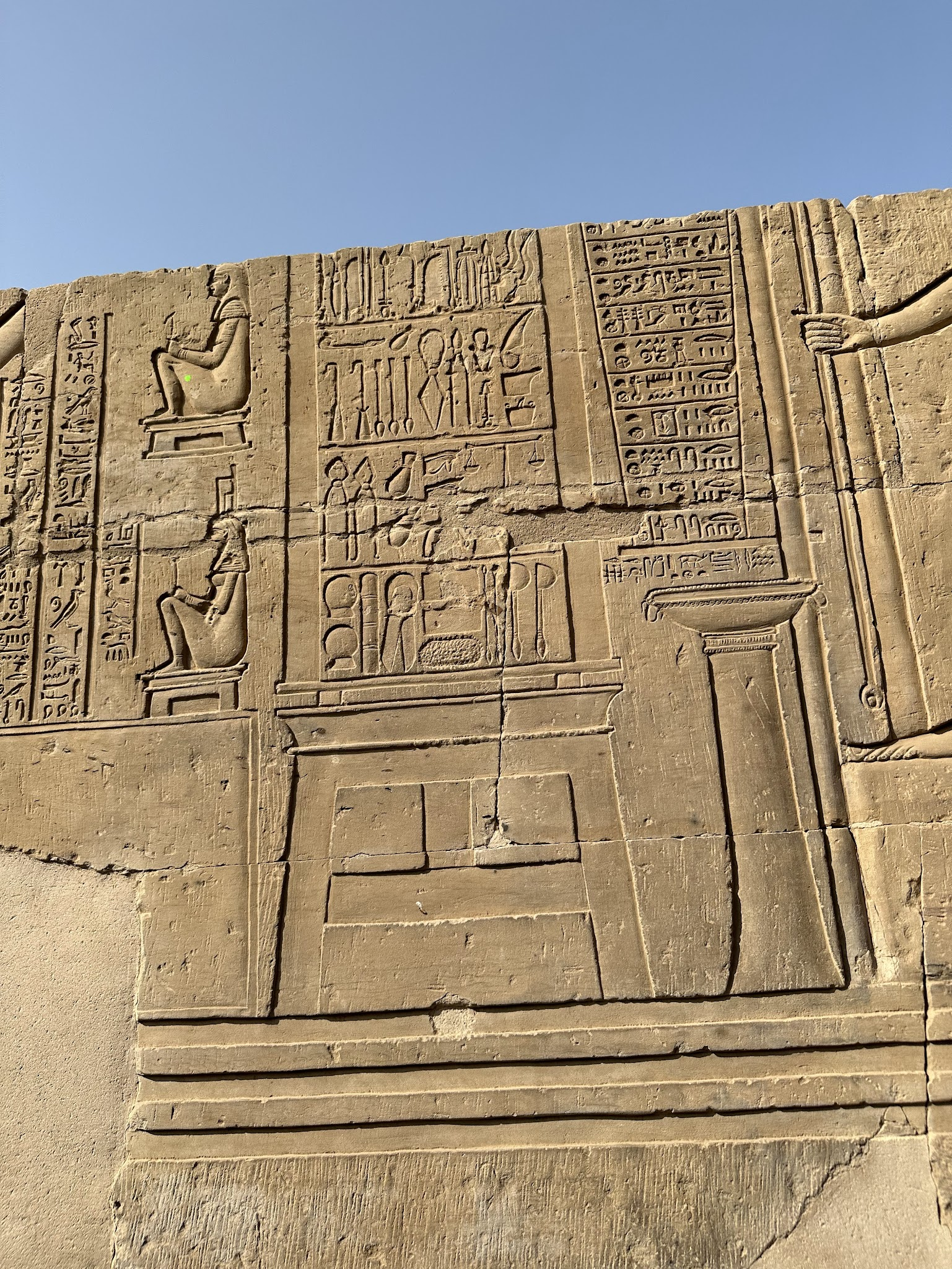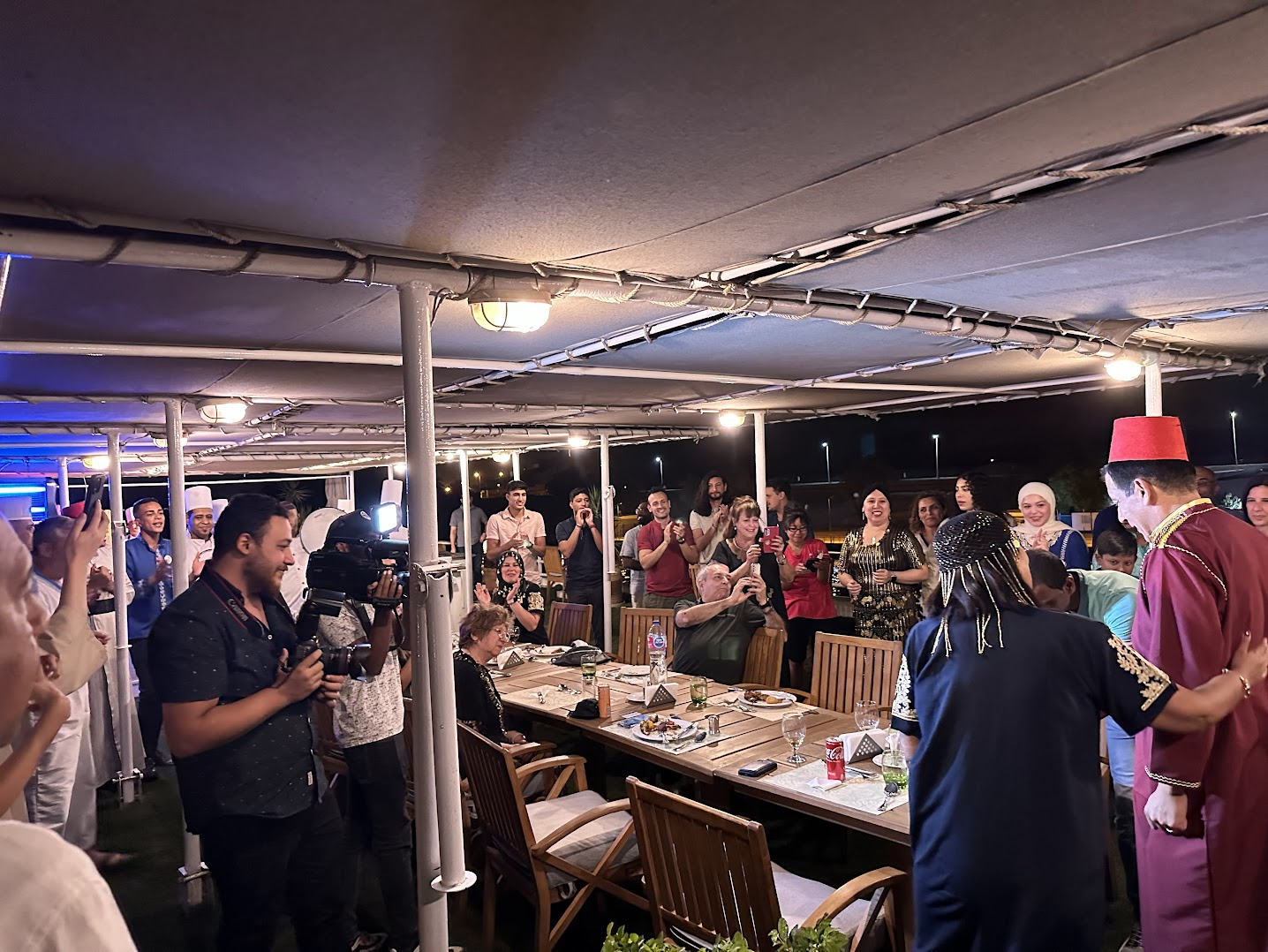Day 5: Edfu and Kon Ombo temple
As on the previous days, we began our excursion to Edfu temple early morning around 8AM before it got hot and busy. Edfu temple is located a little ways from the Nile, so we took a horse carriage to the temple.

Edfu along with the Temple of Kom Ombo, and Philae, was one of several temples built during the Ptolemaic Kingdom. The building was started during the reign of Ptolemy III in 237 BC and completed in 57 BC under Ptolemy XII. Edfu temple is dedicated to the falcon god Horus and his consort Hathor. It was the center of several festivals sacred to Horus.After Egypt became part of the Roman empire, the temple of Edfu fell into disuse as a religious monument following Roman emperor Theodosius I’s persecution of pagans and edict banning non-Christian worship within the Roman Empire.
Over the centuries, the temple became buried to a depth of 12 meter beneath drifting desert sand and layers of river silt deposited by the Nile. Only the upper reaches of the temple pylons were visible by 1798, when the temple was identified by a French expedition. In 1860 Auguste Mariette, a French Egyptologist, began the work of freeing Edfu temple from the sands.
Today, the Temple of Edfu (perhaps due to it being buried under sand for most of its existence) is nearly intact and a very good example of an ancient Egyptian temple.



The video below starts at the front of the Edfu temple and shows the Hypostyle hall in the inner courtyard and two of the inner rooms. The raised and sunken reliefs on the walls in the inner rooms are stunning in their quality and nearly perfectly preserved. Unfortunately, the faces on some of the carvings were chiseled out by Christians and Muslims because of their opposition to depicting gods as images


After the Edfu temple visit, we rode the horse carriage back to the boat and continued our cruise upstream to our next stop, the temple of Kon Ombo. Along the way, we passed by “Gebel Silsila”, the remains of the sandstone quarries as well as temples and shrines cut by pharaohs of the eighteenth and nineteenth dynasty.

The next stop on our itinerary was the Kon Ombo temple. It is located right along the East bank of the Nile. The temple was built during the time of the Ptolemies. The temple is unique because it is in fact a double temple, dedicated to Sobek the crocodile god, and Horus the falcon-headed god. The layout combines two temples in one with each side having its own gateways and chapels. In ancient Egyptian mythology, Sobek is associated with the wicked god Seth, the enemy of Horus. In the Horus myth the allies of Seth made their escape by changing themselves into crocodiles. Sobek’s chief sanctuary was at Kom Ombo, where until the building of the Aswan dam, there were large numbers of crocodiles. Egyptians likely feared the crocodiles, and therefore built a temple to appease the god associated with Crocodiles.

Out of the many cravings on the temple walls two notable ones are – list of calendars with various festivals dedicated to various gods, which shows Egyptian way of tracking time, seasons and so on. The second is an illustration of medical and surgical tools that were used in those times, which shows Egyptians were advanced even in the field of medical science.




The right panel on the picture above shows the Egyptian calendar, which was divided into 3 seasons: flood, cultivation, and harvesting. Each season was divided into 4 months, each month was divided into 3 week and each week was divided into 10 days.




After visiting the Kon Ombo temple, we saw the Crocodile museum where a bunch of crocodile mummies are displayed. The Egyptians believed that a portion of the god’s divine essence entered the body of the totemic animal (eg., crocodile for Sobek), making the animal an incarnate of the god. During its lifetime, the sacred crocodile would have been well fed and cared for. After its death, it would have been mummified and buried. Then the priests would have identified a new croc to play host to the divine spirit of Sobek.

After the visit to Kon Ombo, I chilled on the rooftop deck and admired some gorgeous views of the Nile against the setting sun and a glorious sunset.


We had a special dinner that night. The crew and some passengers dressed up in traditional Egyptian garb and we had dinner on the top deck. We also celebrated the birthday of one of the passengers onboard. It was a very enjoyable evening!




Leave a Reply